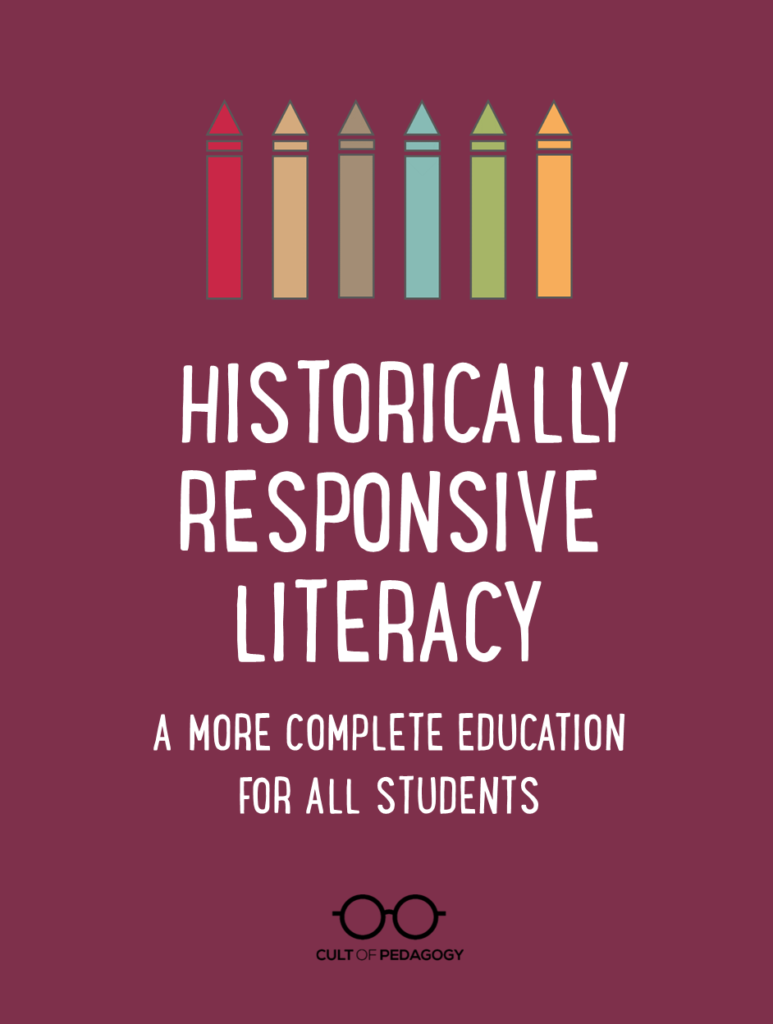
Listen to my interview with Gholdy Muhammad (transcript):
Sponsored by Pear Deck and ISTE U
This post contains Amazon Affiliate links. When you make a purchase through these links, Cult of Pedagogy gets a small percentage of the sale at no extra cost to you.
For years teachers have been looking for ways to improve the academic performance of all students, especially students of color and those from culturally and linguistically diverse backgrounds. While some of these efforts have been successful, many more have had lackluster results.
In the past, we’ve explored different approaches teachers can take to do a better job of reaching all students: interviews with Dena Simmons, Zaretta Hammond, Pedro Noguera, and Hedreich Nichols, to name a few. In these conversations, we looked at more effective ways of relating to students, strategies for working toward equity outside the classroom, and instructional methods that are more culturally responsive.
This post continues that work with a fresh response to the question of how to better serve diverse students. It’s a framework that deals directly with the curriculum side of things, the standards, the actual content we teach in our classrooms. The framework is called Historically Responsive Literacy, and it was developed by Dr. Gholdy Muhammad, a professor, a former middle school educator, and the author of the book Cultivating Genius: An Equity Framework for Culturally and Historically Responsive Literacy, where she makes the case for this framework.
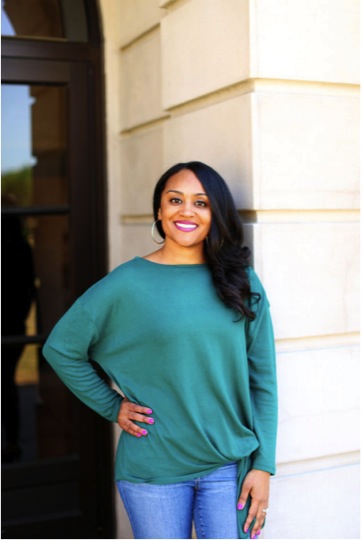
In short, Muhammad believes we’re not reaching many of our students, especially Black students, because our curricula and standards are lacking. The emphasis in our current standards is mainly on skills—skills that can be measured easily on standardized tests—and not a whole lot else. Some teachers go beyond the tested material, pushing students to think critically, exploring social emotional competencies, and designing opportunities for inquiry-based learning; unfortunately, the standards themselves don’t require those things.
But there was a time in history when a more complete, more human form of “curriculum” did exist, and it energized and inspired its students—all of them Black men and women—to read, write, speak, and publish with the kind of passion and dedication we would want all of our students to have about learning. This curriculum evolved within the Black literary societies of the 19th century. These groups met regularly to read, write about, and discuss a wide range of texts and ideas. Their goals were far loftier than basic skill development or scores on a test, and engagement—to borrow a term we use in modern education—was at an all-time high.
These societies were the inspiration for Muhammad’s Historically Responsive Literacy framework, a four-layered pedagogical model that places skills on an equal plane with three other learning pursuits: identity, intellect, and criticality.
The framework was designed with Black students in mind, but it will benefit all students. Muhammad explains it this way: “If we start with Blackness (which we have not traditionally done in schooling) or the group of people who have uniquely survived the harshest oppressions in this country, then we begin to understand ways to get literacy education right for all” (p. 22).
In our interview, she unpacks all four layers of her framework and helps us understand what it looks like to implement them in the classroom. What follows is a summary of our conversation.
First, Two Clarifications
Is Historically Responsive Literacy Just for “Literacy” Teachers?
No. In the book, Muhammad explains that in the past, “literacy was synonymous with education, so although I name ‘literacy,’ these four pursuits can be used and layered with math, science, ELA, social studies, or physical education/health” (p. 57).
In other words, this is not just a framework for ELA teachers, and in the book, Muhammad explores how to implement HRL in many different subject areas.
Is HRL different from Culturally Responsive Teaching?
Think of HRL as living under the broader umbrella of Culturally Responsive Teaching, which includes relationship-building, instructional strategies, and curriculum. “My work is taking a more historic look back and putting a practical model to the theory,” Muhammad says.
The Four Layers of Historically Responsive Literacy
Historically Responsive Literacy is built on four layers, four “learning pursuits” that Muhammad believes should receive equal priority
1. Identity
For students to be fully engaged in school they must first find it relevant, and that starts with identity.
“Identity is who you say you are, who others say you are… (and) who you desire to be,” Muhammad says. “I feel like children are trying to make sense of all three areas, and the curriculum and the pedagogy should be an opportunity for students to know themselves.”
Muhammad believes this is especially important for children of color because “when we look at representation in children’s literature, in society oftentimes, and historically, they are invisible or represented in negative ways. So the classroom needs to be a space for students to affirm and celebrate and validate who they are, so that they know they are enough, so they know they are brilliant and excellent and beautiful. Because society doesn’t tell us that all the time.”
Along with self-knowledge, the learning pursuit of identity should also include knowledge of others who are different from ourselves. “When students learn about the lives of other people,” Muhammad says, “they are less prone to hate, to treat them in harmful or hurtful ways.”
What it looks like in the classroom: Start by asking yourself, “How does my teaching and learning help students to learn about themselves and about others?”
From there, plan instruction and write learning goals to satisfy that question. Muhammad gives an example from science. “Some teachers have written it (in language like) Students will understand their environmental identity and their roles and responsibilities regarding the planet. Then in the lesson or unit there are opportunities for students to deeply reflect about how they recycle or (whether) they take care of the earth and the planet and the environment.”
Finally, be sure to assess for it. “Kids know that if my teacher values it that she or he or they are going to test it,” Muhammad says. “You can assess it in discussion, in a quiz, or a summative kind of test at the end: What are five things you can do to take care of the planet? Or Name five roles that humans play on climate change. So it could be a qualitative or a quantitative assessment, but if you value it enough, you can assess it.”
2. Skills
So much of our current curricula and standards already focus on skills, so this part of the framework is nothing new; what’s important is to not throw it out when the other three layers are added.
Muhammad explains that this abandonment of skills is a common problem when new approaches to schooling are introduced. “That’s a way of thinking that we have to dismantle,” she says. “Sometimes we think that when we add identity or when we add voice and freedom of expression, that somehow we don’t focus on skills at all. But that’s just simply not true. You can have it all. You can have voice and fun and engagement and skills.”
What it looks like in the classroom: Teaching skills is more or less what you’d expect typical school content to be, what our current standards are already prescribing. “In math it can be learning equations. In ELA it can be citing textual evidence. In social studies, it can be questioning the source. In physical education it can be learning to play basketball.”
So the skills themselves may be taught in whatever way works best for your students. The difference now is that in terms of class time and assessment, their weight will be equal to that of the other three layers.
3. Intellect
Along with identifying the skills students need to acquire, Muhammad urges us to ask What do we want our students to become smarter about?
Because our recent standards have been so skills-driven, knowledge has fallen by the wayside in a lot of schools, and that can strip away the joy that comes from simply learning new things about the world. But the Black Literary Societies of the 19th century valued knowledge as a vital part of a person’s development. “So I’m pushing this idea of intellectualism,” Muhammad says, “of treating young people as if they are scholars and intellectuals and thinkers.”
She sees the loss of intellectualism even in how we prepare and treat teachers. “It’s like we’re sucking the power out of them by telling them to read a script in a curriculum. We need to go back to teacher as intellectual, teacher as scholar, reserving the field for the brightest among us who are knowledge-seekers.”
And Muhammad’s definition of intellectualism goes beyond simply gathering facts. “Intellectualism is when you do something with that knowledge, where you apply it somehow, in your discussion, in your activism, in your actions.”
What it looks like in the classroom: When developing lessons and units, ask yourself, “How does my teaching and learning help to teach students new knowledge and concepts? New histories, new people, places, and things?”
Muhammad cautions teachers not to confuse skills for knowledge. “You shouldn’t say they became smarter about equations or citing textual evidence,” she says. “That’s not intellect. Those are skills.”
4. Criticality
“Criticality is helping students to read, write and think in active ways,” Muhammad explains, “as opposed to passive—when you ask a question and there’s one correct answer, and you just take it in. We don’t want them to be passive consumers of knowledge. We want them to question what they hear on the news.”
“We see the word critical and sometimes our minds can go to critical thinking,” she continues. “But it’s more than just deep and analytical thinking. Criticality is deep and analytical thinking to understand power, equity, anti-racism and other anti-oppressions. This is where we help students to be woke.”
This fourth layer is essential “because oppression exists in the world. Period. We want students to leave our schools not contributing to more oppression or wrongdoing and hurt in their relationships and with strangers. We also don’t want them to be silent. If they see oppression, we want them to actively respond to it.”
What it looks like in the classroom: “With criticality,” Muhammad says, “the teacher is asking, How does my teaching and learning help students to understand power, equity, anti-racism and anti-oppression? So (students are) reading, writing, thinking in active ways to understand power, inequality, equity, oppression. They’re investigating different standpoints, especially the marginalized point of view, and reading between the lines. In other words, reading for what’s not being said and for what’s not there.
The brilliance of the framework is revealed when Muhammad explains that the four layers are not separate, but progressive, each one building on the layers that came before it, starting with identity: “They see themselves, they validate themselves, they’re learning about other people, which creates a safe space to learn the skills. If you learn the skills, you can learn the intellect. You cannot learn the intellectualism without first having those skills to do so. If you have the intellectualism and that knowledge, you can critique the knowledge. Because of all the layers that came before it, you now have the capacity to disrupt and to dismantle. If you’re just woke without the identity and the skills and the intellect, you’re not going to be able to make change in ways that you could with those things.”
Tough, but Possible
Making this kind of shift—especially if our standards still don’t reflect these four layers—will not be an easy task to take on. This concern has been expressed when Muhammad presents her framework to teachers. But despite its challenges, she feels this type of curriculum is exactly what any parent would want for their child.
“It’s not a matter or a question of if it’s tough,” she says. “The question is, is it possible? Everything is tough. And if you had your own child, if you’re a parent, parents are going to equally value the beautiful ways that their child loves themselves: identity, the skills they have, the intellect they have, and the social consciousness they have. I don’t see parents saying No, let’s just talk about my child’s reading skills. They talk about their emotional intelligence, they talk about the whole child.”
“And that’s what we’re trying to get to,” she says. “This is humanizing work.”
Join our mailing list and get weekly tips, tools, and inspiration that will make your teaching more effective and fun. You’ll get access to our members-only library of free downloads, including 20 Ways to Cut Your Grading Time in Half, the e-booklet that has helped thousands of teachers save time on grading. Over 50,000 teachers have already joined—come on in.

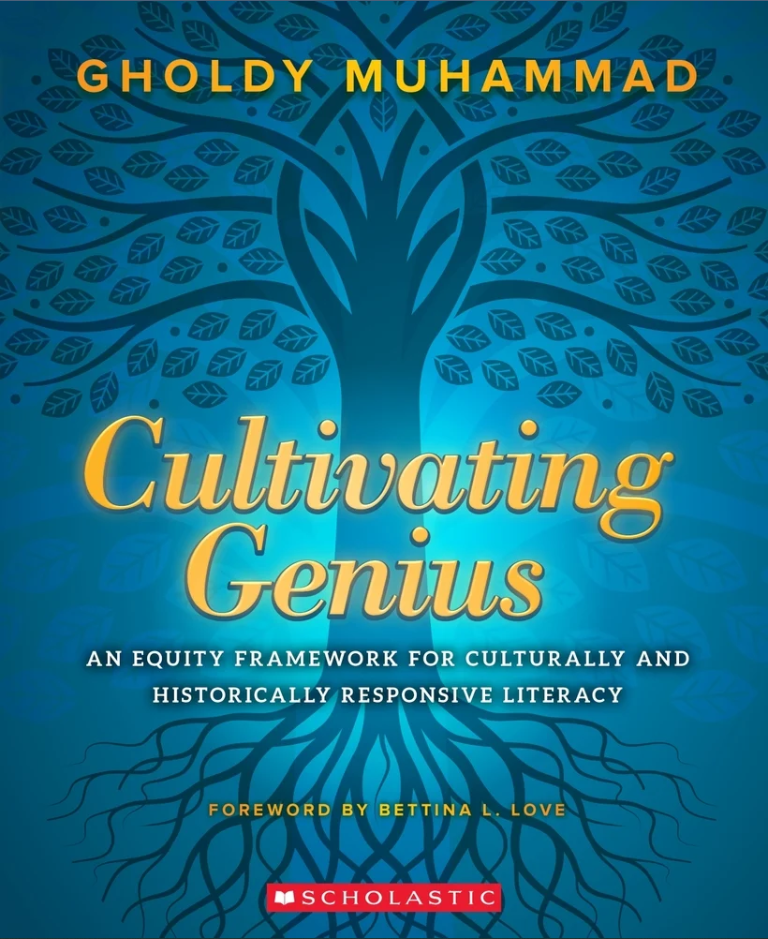
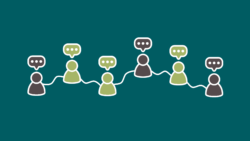
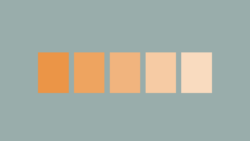
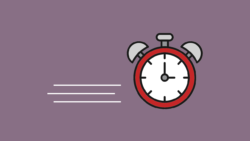

Do you have any sample lessons for ELA using HRL for high school students to use as a jump start?
Would like to see a sample lesson plan for either Computer Science or Accounting.
Every time I spend time learning from Gholdy, I walk away humbled, inspired and invigorated. I love her voice and her willingness to share her art of teaching with us.
Thank you for sharing this conversation!
This part in particular got me thinking: “The emphasis in our current standards is mainly on skills—skills that can be measured easily on standardized tests—and not a whole lot else.” This seems to identify the current philosophical foundation of the curriculum you reference is primarily Essentialism (suggesting that we should teach the facts and skills of the traditional subjects very thoroughly to ensure mastery).
Are we to interpret Dr. Muhammad’s framework as perhaps more in line with a reconstructionist philosophy? (Which, in my understanding, is articulated as one suggesting that we should use education as a tool for social reform, to improve society, for the greater good.)
Or is the philosophy of the framework more in line with Progressivism, focussing on the whole learner (rather than on subject content) and ensuring students have the opportunity to question, experience, and experiment.
The very big question of what is the purpose of education plagues me often. Is it to “teach the stuff” that we have deemed important (who decides?)? Is it to improve society (according to who’s vision?)? Is it to nurture and grow unique, fulfilled individuals? Is it to grow capable and competent learners? All of the above? Is all of the above possible all at once?
The post explains that Dr. Muhammad’s framework is a “pedagogical model that places skills on an equal plane with three other learning pursuits: identity, intellect, and criticality”.
I wonder if I can make these connections between the four identified learning pursuits and the four main conceptions of curriculum I am learning about in my graduate coursework (the little quotes I reference in my puzzling below are from Dr. Muhammad):
– skills = an Academic conception of curriculum, focused on learners’ understanding of knowledge. This is old hat, this is the “stuff”. “[T]his part of the framework is nothing new; what’s important is to not throw it out when the other three layers are added.”
– identity = a Humanistic conception of curriculum focused on a student centered approach that focuses on the needs and interests of the learner. “…the curriculum and the pedagogy should be an opportunity for students to know themselves.”
– intellect = a Cognitive Processes conception, focused on developing intellectual processes making learning systematic and efficient. “Intellectualism is when you do something with that knowledge, where you apply it somehow, in your discussion, in your activism, in your actions.”
– criticality = Social Reconstruction conception, focused on the present and future needs of society and culture; curriculum as an agent for societal betterment. “Criticality is deep and analytical thinking to understand power, equity, anti-racism and other anti-oppressions. This is where we help students to be woke.” Sounds like an improvement to society to me.
Is it possible to defend a position that values one at the expense of the other three? What about choosing two or three and then losing two or one? It feels like ethics begin to edge in.
So, if we feel that the best thing, the right thing, is to address all four learning pursuits, all four conceptions of curriculum, how do we do it? How do we do it without losing our focus (or our marbles)? Do all four receive equal focus all of the time? Dr. Muhammad says, that these four are not isolated but are “progressive, each one building on the layers that came before it, starting with identity”, then to skills, intellect, and criticality, in that order. She also then acknowledges that it’s tough. “Tough but possible.”
So much to think through.
I welcome any thoughts and conversation if anyone out there is inclined to take a deep dive. 🙂
Hello, and thank you for this tremendously thoughtful and timely post. I so appreciate this move away from skills (but not so far away that they aren’t taught!) and more towards the ‘humanizing work’ of teaching. I really want to follow this guide as we approach next year and focus, for my students and myself, on what is NOT there or said as a way to facilitate deeper learning, questioning and help in identifying how and what students think about their own learning. To me it has never really been about content, but the process of interacting with the content and this framework is helpful and will help me to deepen my practice and routine hopefully resulting in more authentic learning for my students. Thank you for this post!
I couldn’t agree more! I live in work in British Columbia, Canada, and our government has recently moved away from a content-based approach to a more Humanistic or Social Reconstructionist approach. This shift has freed teachers from the shackles of content-based curriculum and allowed us to focus instead on developing skills such as critical thinking and creativity. With that being said, there must still be some focus on skills such as basic math facts. I find it’s a balancing act. Just how much focus on content is necessary to provide the framework so that students can respond and interact with ideas and concepts is that question I struggle with.
Very informative and lots of useful information
This was a timely podcast for me as I am writing curriculum for my upcoming Spanish for Heritage Leaners class. Not only do I want to give my ELLs and Heritage Learners the skills they need to compete and succeed in the world around them, but I want them to identify with the subject area. I believe that student buy-in will happen when they see themselves connected with and profiting from the material being taught.
THANK YOU, Gholdy and Jennifer! I am so curious about the Black literary societies–gotta get that book.
I am hopeful that our national educational shake-up and the energy rising in many of us will give a boost to all of us who want to ditch those frikkin’ packets and prompts and “writing on demand” and get into some interesting and important learning, starting with the youngest kids. They aren’t bored because they’re “typical kids” or “that generation.” They’re bored and disengaged because school systems have been giving them boring and disengaging things to do.
Gholdy, you have given us words and a scaffolding and even a historical precedent for work we need to do for all our students. Thank you!
My K-12 Reading Specialist licensure definitely worked within this topic, too, and that was certainly one reason why I specifically tuned into picking up this PD. It was a wonderful perspective, and one that I certainly believe most teachers in general would greatly not only appreciate, but benefit from in the classroom setting. Now more than ever, and in particular light of virtual teaching and learning, it is imperative that teachers are able to connect with their students and ensure that they are finding a way for students to become more open to the “other,” as well as engage in the critical work ahead of them. Wonderful podcast and highly recommended for all teachers, regardless of content area.
Last, but certainly not least, I loved the entire discussion — very directed toward social justice and critical thinking. Loved, loved, loved the points directed toward Paulo Freire, too… “Reading the world always precedes reading the world.” — Paulo Freire. Indeed, it does!
Thank you so much for this post! Dr. Muhammed has given substance to the concept of identity within education for me. When I first got into education, I wanted to find a way to position students in a way that would empower them to take charge of their own learning and not be passive bystanders or requirement fulfillers. I want them to work on finding themselves and their place in the world, what they feel passionate about and what things they need to learn and experiences they need to have in order to help themselves accomplish they things they want to in the present and the future. I’m looking forward to reading this book as well as following more discussions about how teachers are making this framework happen in their classrooms. So excited!
Thank you for sharing this valuable information! I especially appreciate the explanation that this framework can and should be used across content areas.
Hi Jennifer! Thanks for sharing your interview with Dr. Gholdy Muhammad! I hold the same opinion that the emphasis only on skills is not enough and suitable for our current education. Dr. Gholdy Muhammad come up with the four-layered pedagogical model that not only includes skills but also identity, intellect, and criticality. Besides skills, I was impressed by the three other learning pursuits. I am a world language teacher, I definitely agree that opportunities for students to know themselves should be provided in classes. Intellect is the most challenging one for me. When I design my own lessons, I am always confused about the difference between skills and intellect. Does intellect mean relatively abstract concepts? How could I achieve the pursuit of intellect in my world language classes? I would like have more discussions about it if anyone is interested in it.
Yang, that is a good question. If you scroll down to The Four Layers of Historically Responsive Literacy section of the post, Jenn differentiates between Dr. Muhammad’s definitions of skills and intellect. You may want to take another look at that section to see if it helps clarify things for you.
In the podcast episode, Jenn and Dr. Muhammad both suggest a few different ways of incorporating intellectualism into the classroom. In a world language class, skills might refer to the learning standards for language acquisition. Intellect might have more to do with learning about the cultures and histories of people who speak the language.
This post was published a few years ago, but there may be other world language teachers out there who will share their ideas here, as well!